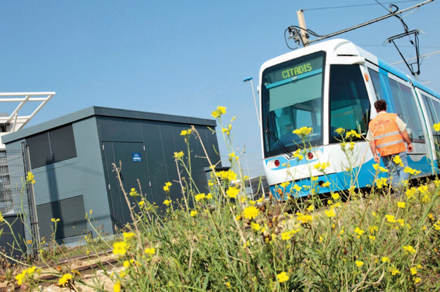|
On 18 December 2017, Azienda Trasporti Milanesi (ATM), Milan’s subway operator, put into service its first 1,500-V bidirectional substation on the Yellow Line of the Milan Underground. The Yellow Line is a standard-gauge line fed from a dc overhead line.

The manufacturer of the new unit, Alstom, calls their line of bidirectional substations Hesop. The new unit is the first 1,500-Vdc 4-MW Hesop bidirectional substation put into service. It will allow ATM to be more energy efficient by recovering braking energy and feeding the energy back to the electric utility. It will also help to control tunnel temperatures. ATM’s new addition is the second Hesop in commercial operation on a subway line; the first was the Hesop dc 1-MW substation, which has been in operation since March 2015 for the London Underground.
The Hesop system works by converting and transferring any unused power generated by the trains during braking to accelerate trains elsewhere on the line or by returning the excessive power to the grid.
The Hesop control system is highly intelligent and ensures that the energy is recovered via the most efficient route that the infrastructure will permit. It enables the recovery of more than 99% of the traction energy generated during braking, thereby reducing carbon dioxide emissions through reduced energy consumption.
On the Yellow Line, the system will allow ATM to recover 15% of the traction energy generated when trains brake and then to reinject that energy into the public power grid.
“This is fantastic news for us, for Milan Underground, for commuters, and for the environment,” said Michele Viale, managing director of Alstom in Italy and Switzerland.
“We bring our innovative technology with the introduction of Hesop in the Rogoredo substation of the Yellow Line of the Milan subway. We would like to thank ATM, which played a key role by supporting the Alstom team throughout the installation and testing phase. This is just the latest sign that we at Alstom are determined to become more and more active across rail infrastructure in Italy.”
Full article: IEEE Vehicular Technology Magazine, Volume 13, Number 2, June 2018 |